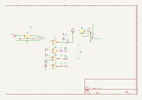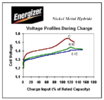I would like to know if the circuit will still work correctly if I will replace the TL072 by TL082 and the MJE2955 by BD244C ?
It will probably work, but it is not an ideal charger. It will take anything from a two cells to possibly six cells, at a guess.
A single cell is unlikely to work properly due to the opamp not including the negative supply (0V in the circuit) in its common mode range; both the 07x and 08x only work down to 1.5V from the negative pin.
A rail to rail input one would be better, but it needs to be a FET or CMOS type ideally, something with very low input current.
The overall circuit appears to be a fixed high-current charge while on, and shut off when the cell voltage stops increasing, so it should work moderately well for high capacity cells. For AAA cells, increase the one ohm resistor to eg. five ohms so they are not damaged by too high a charge current.
It has no trickle charge capability, and an occasional long trickle charge (even after a normal full charge) is required to keep the cells in good condition, as is occasionally doing a full discharge to low voltage.
Trickle charging balances series cells in packs and also reforms the plate surfaces to prevent crystallisation.
You could add a resistor directly from the 12V input to battery positive, to give a low trickle; just around 2 - 4mA continuous will improve the battery state and they can be left at that for days, assuming they are 400mAH or higher.



